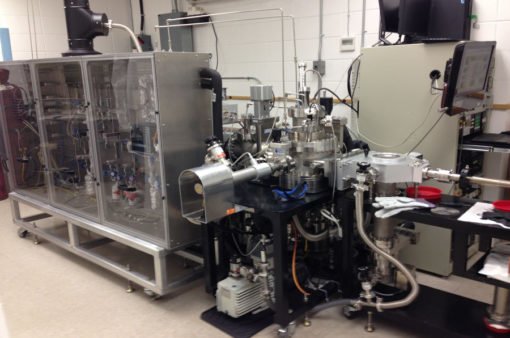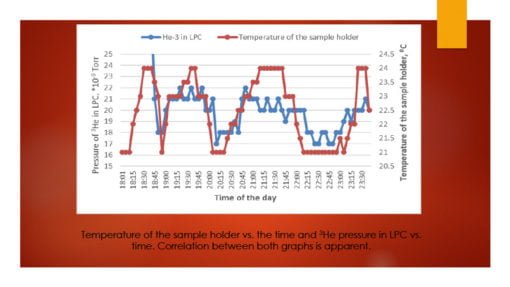
Listen to episode #23 of the Cold Fusion Now! podcast with Ruby Carat and Special Guest Dr. Dimiter Alexandrov, a Professor of Electrical Engineering and Head of the Semiconductor Research Center at Lakehead University in Thunder Bay , Canada.
He talks with Ruby about his transition to LENR research.
Go to the Cold Fusion Now! podcast page to listen to Dr. Dimiter Alexandrov.
“It was exactly 30 years ago when I read about the first cold fusion experiments. My current involvement in the LENR research is based on experimental research outcomes got accidentally two years ago,” says Dr. Alexandrov.
His materials and electronics research led him to investigate deuterium and hydrogen plasma for the purpose of manufacturing semiconductors.
“The palladium specimen was placed on the sample holder and deuterium nitrogen gas mixture was directed to the specimen in the environment of inflated hydrogen.”

“During the experiments, I found the release of helium, especially the lighter stable isotope helium-3, and another stable isotope helium-4. I also found there is a correlation between the heat release and the release of helium.”
“For me, it was apparent that I was observing low energy nuclear reaction. I would like to determine if it was cold nuclear fusion because, in fact, the initial products were deuterium, and hydrogen – hydrogen was actually coming from the environment – and their interactions with the metals. Generally speaking the end products were helium. There is no other way other than to conclude that cold fusion has occurred.”
Two different methods to determine helium production at the sample were used.
“One way was mass spectroscopy. It was clear we had a release of helium-3. However, mass spectroscopy cannot distinguish helium-4 from molecular deuterium.”

“That’s why additional experiments were done, and I was lucky I found there was a release of helium-hydride, that is helium-4-hydride, and, the mass spectroscopy showed clearly that helium-hydride had been released”, explains Dr. Alexandrov.
Helium-hydride is a positively-charged ion, a helium atom bonded to a hydrogen atom, with one electron removed. He reasons that the helium-hydride could not occur unless helium was produced in the main chamber.
“I did additional experiments in order to confirm we are talking exactly about helium gas, and these experiments were connected with optical spectroscopy of the excited gasses immediately above the sample holder. This optical spectroscopy shows very clear peaks about helium, which means we have optical radiation from the excited helium, and actually, it shows a typical peak for helium-4 and one peak pertaining to helium-3.”
He also finds a temperature change that cycles up and down, correlating with the cycles of helium-4 concentration. The temperature of the sample holder, begins at room temperature, but after interacting with the deuterium gasses in the hydrogen environment, the temperature increases about 3 degrees Centrigrade for approximately 15 minutes or so, and then drops back down to initial temperature, and then increasing again, etc.

“I observed several cycles, and several times this happened, and the cycles of the temperature change correlate with the cycles of concentration of helium-3 in the main chamber. The heat release happens because of the creation of helium-3, and helium-4 as well”, he says.
Dr. Alexandrov recently presented at the 2019 LANR/CF Colloquium at MIT with Synthesis of Helium Isotopes in Interaction of Deuterium Nuclei with Metals [.pdf]
What’s next for this repeatable experimental effect?
Go to the podcast page to listen to Dr. Dimiter Alexandrov discuss his LENR research with Ruby Carat on the Cold Fusion Now! podcast.




